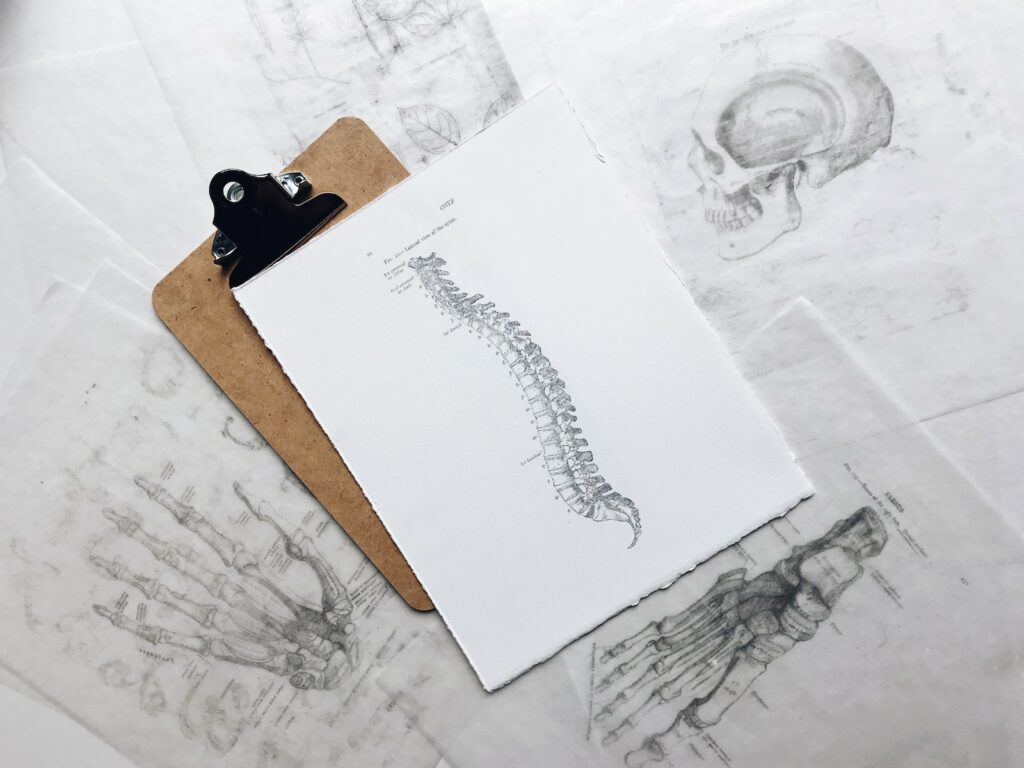
Achieve Back Wellness with Expert Advice
A healthy spine is the foundation of overall well-being, as it plays a crucial role in maintaining mobility, preventing injuries, and supporting a pain-free lifestyle. The importance of caring for one’s spine cannot be understated, as it directly impacts daily activities, posture, and even one’s mood. This article will provide practical tips, exercises, and an introduction to chiropractic care for preserving and enhancing spine health, ensuring the reader can optimize their physical comfort and ability.
Incorporating a combination of exercises, ergonomic adjustments, and chiropractic care can help individuals build and maintain a strong, flexible spine. These strategies aim to improve overall posture, prevent spinal injuries, and alleviate the discomfort that can arise from chronic spinal issues or temporary strain. By understanding the essential elements of spinal health, one can make informed decisions about incorporating these practices into their daily routines.
Through research-backed tips and expert chiropractic advice, readers will be empowered to make lasting, positive changes to benefit their spine health for years to come. By engaging with this comprehensive guide, individuals seeking to maintain or improve their spine health can access effective tools and strategies to bolster their daily efforts in pursuit of long-lasting spinal well-being.
Understanding the Spine and Its Function
The spine is an essential structure in the human body that provides support, enables movement, and houses the spinal cord. It helps maintain proper posture and plays a critical role in various bodily movements and functions, such as standing and walking 1. Spinal health is crucial for overall well-being, enabling a wide range of motion and preventing pain and discomfort.
The spine consists of 33 vertebrae stacked on top of each other to form the spinal column, which is divided into different regions: cervical, thoracic, lumbar, sacral, and coccygeal 2. These vertebrae are connected by intervertebral discs that work as shock absorbers while allowing flexibility. In addition, facet joints also promote smooth motion between vertebrae while maintaining spinal alignment.
A significant aspect of spine health is the spine’s natural curves, which form an S-shape in a healthy individual 3. These curves cushion the body against impacts and facilitate efficient load distribution. Over time, improper posture and weakened muscles can lead to changes in these curves, affecting spinal alignment and potentially causing pain or discomfort.
Maintaining a healthy spine involves a combination of exercise, proper posture, and chiropractic care. Regular exercise, particularly targeting the muscles that support the spine, can improve strength, flexibility, and overall spinal health. Incorporating stretching exercises can boost the range of motion and decrease the risk of injury.
Paying attention to posture, whether standing, sitting, or lying down, can contribute to proper spinal alignment and less discomfort in daily activities. For instance, using ergonomic chairs and maintaining neutral posture can help minimize undue pressure on the spinal column.
Chiropractic care can further support spine health by addressing misalignments and offering treatment plans to improve overall well-being. Chiropractors perform spinal adjustments to correct misalignments and restore optimal function. They may also provide recommendations on exercises and posture modifications to maintain a healthy spine in the long run.
In conclusion, understanding the spine’s structure and function is vital for achieving and maintaining a healthy spine. By focusing on spinal health, one can improve their range of motion, posture, and overall quality of life.
Essential Factors Contributing to a Healthy Spine
A healthy spine is crucial for overall well-being and daily functioning. There are several factors that contribute to maintaining a healthy spine. Some of these include proper posture, core strength, and regular exercise.
Posture plays a significant role in spine health. Maintaining proper posture while sitting, walking, and standing reduces the strain on the spine and its supporting muscles. Good posture helps align the spine, allowing it to function optimally and reducing the risk of developing back pain or other issues. It’s essential to be mindful of your posture while performing everyday tasks, such as working at a computer, driving, or lifting heavy objects.
Core strength is another crucial component of a healthy spine. The core muscles provide essential support for the spine, allowing it to withstand everyday movements and activities. A strong core promotes proper alignment of the spine and helps maintain balance during physical activities. Incorporating core-strengthening exercises, such as crunches, planks, and leg raises, into an exercise routine can be beneficial in supporting spine health.
Regular exercise is essential for maintaining a strong and flexible spine. An exercise program that includes a mix of strength training, aerobic exercises, and mobility-enhancing activities can help keep the spine in top condition. Strength training, specifically targeting back, abdominal, and leg muscles, can provide additional support for the spine and maintain overall body stability. Aerobic exercises, such as swimming or brisk walking, can help maintain cardiovascular health while minimizing the impact on the spine. Yoga and Pilates are examples of mobility-enhancing activities that can improve flexibility and aid in spine health.
To achieve greater spinal health, it’s important to build and maintain proper posture, core strength, and regular exercise. By considering these essential factors, an individual can go a long way towards maintaining a healthy spine and overall well-being.
Prevention of Spinal Problems
A healthy spine is crucial for overall well-being and daily activities. Maintaining strength, mobility, and proper posture are all essential aspects of preventing spinal problems. In this section, we will provide several tips and recommendations that can help you keep your spine in good shape.
Regular exercise should be a cornerstone of any spinal health routine. Engaging in a tailored exercise program can help improve overall strength and mobility in the back and neck. Incorporating both low-impact aerobic exercises, such as swimming or walking, and targeted conditioning exercises, like back stretches, can promote spinal health and prevent pain.
In addition to exercise, it is crucial to maintain proper posture throughout the day. Good posture involves keeping the spine aligned by ensuring that the ears are above the shoulders and the shoulders are above the hips. Regularly practicing proper posture can help condition the muscles that support the spine, reducing the chances of developing chronic issues.
Wearing appropriate shoes with proper support and cushioning is another important aspect of maintaining spinal health. Good shoes can not only prevent foot and ankle problems but also improve your posture by providing the necessary support from the ground up. If needed, consider using orthotics for additional support and alignment.
Creating an ergonomic environment is essential to ensure that the spine remains healthy and pain-free. Ergonomics involves adjusting the workspace or daily activities to meet the individual’s needs, reducing the risk of injury or strain. For example, adjusting the computer screen, keyboard, and mouse to be at comfortable levels can help maintain a neutral spine position while seated. Additionally, using ergonomic furniture, such as adjustable chairs and desks, can promote proper posture and spinal alignment.
In conclusion, maintaining a healthy spine requires a multifaceted approach involving regular exercise, proper posture, appropriate footwear, and an ergonomic environment. By implementing these recommendations and staying mindful of spinal health measures, you can effectively prevent spinal problems and ensure your spine remains strong and flexible.
Common Spinal Disorders
A healthy spine is essential for overall well-being, but there are numerous spinal disorders that can cause discomfort and impact daily life. This section will discuss common spinal disorders and their symptoms, while maintaining a confident, knowledgeable, and clear tone.
Back pain and neck pain are prevalent spinal disorders that many people experience. They can be caused by various factors, including muscle strains, injuries, and degenerative diseases. Back pain is often felt in the lower back, while neck pain can arise from issues within the cervical spine.
A herniated disc is another common spinal issue. This occurs when the soft center of a spinal disc pushes through a crack in the tougher exterior casing. As a result, the protruding disc can place pressure on nearby nerves, causing pain, numbness, or weakness in the limbs.
Whiplash is a neck injury that typically occurs during a car accident when the head is suddenly and forcefully jerked backward and then forward. This rapid movement can strain or tear neck muscles and ligaments, leading to pain, stiffness, and restricted mobility.
Arthritis is a degenerative joint disease that can affect the spine, causing pain and stiffness. Osteoarthritis, in particular, can erode the cartilage between the vertebrae, leading to bone-on-bone contact and further inflammation. This may eventually cause spinal stenosis, a condition where the spinal canal narrows and compresses the nerves within, triggering pain and numbness, particularly in the lower back and legs.
Misalignment of the spine, also known as subluxation, can occur due to various reasons, such as poor posture, injury, or repetitive stress. This lack of proper alignment can lead to muscle tension, nerve irritation, and decreased range of motion.
Migraines and headaches can sometimes stem from issues within the spine. Cervicogenic headaches, for instance, originate from the neck, where misalignments or muscle tension can cause pain to radiate through the head.
Chronic pain is a persistent issue that afflicts many individuals. This ongoing pain might be associated with several spinal disorders, including neuropathy, which involves nerve damage that can cause tingling, numbness, or burning sensations throughout the body.
Lastly, muscle spasms in the back and neck are involuntary muscle contractions that can cause sudden, intense pain. These spasms can be a response to muscle strain, overuse, or an underlying spinal disorder.
Being aware of these common spinal disorders can facilitate early detection, prompting timely treatment, and ensuring a healthier spine.
How to Recognize Spinal Problems
Spinal problems can manifest in various forms and can affect a person’s overall quality of life. Recognizing the warning signs early on is essential for seeking proper treatment and preventing further complications. Some common symptoms of spinal issues include back pain, neck pain, headaches, migraines, and muscle spasms.
Back pain and neck pain are often the first indicators of potential spinal issues. These types of pain can stem from many factors such as poor posture, strained muscles, or misalignment of the spine. If the pain is persistent or worsens over time, it is essential to consult a medical professional for a thorough evaluation.
Headaches and migraines may also be associated with spinal problems, especially if they occur frequently or are accompanied by other symptoms like neck pain or limited range of motion. Spinal issues can cause tension in the surrounding muscles, leading to headaches and, in some cases, migraines. Paying attention to the frequency and intensity of such occurrences is crucial in determining if a spinal issue may be the cause.
A reduced range of motion in the neck, shoulders, or back is another warning sign of a potential spinal problem. This may present as difficulty turning the head, bending the neck, or lifting the arms. A limited range of motion can be due to inflammation, misalignments, or injuries to the spine. If there has been a sudden onset of limited mobility, it is crucial to seek medical attention.
Muscle spasms can occur anywhere in the body, but if they are frequent and centralized around the spine, this could point to an underlying spinal issue. Experiencing muscle spasms in the neck, shoulders, or back may be a sign of nerve irritation or damaged discs in the spine.
In conclusion, recognizing and monitoring these warning signs early on can lead to timely intervention and appropriate care for spinal problems. By being attentive to one’s own body and observing any changes in pain, range of motion, and muscle activity, individuals can take a proactive approach to maintaining a healthy spine.

Role of Exercise in Spinal Health
Maintaining a healthy spine is essential for overall well-being. Exercise plays a vital role in promoting spinal health, as it helps to strengthen the supporting muscles, improve balance, and enhance flexibility. Incorporating a variety of exercises into your routine can help you achieve these goals and contribute to a more healthy and functional spine.
Stretches are an important component of any exercise routine designed to improve spinal health. They can help relieve muscle tension, increase flexibility, and expand the range of motion, which is essential for maintaining good posture and preventing injury. Lower back rotational stretches are a great example of an effective spinal stretch that can be performed easily and consistently.
Strengthening exercises are crucial for maintaining a strong, supported spine. Core exercises, such as the bird dog, can help develop the abdominal and lower back muscles that contribute to a stable spinal column. In addition, yoga and swimming can be effective in improving spinal health, as they provide a full-body workout that enhances both strength and flexibility.
Working on balance is another aspect that should not be overlooked when it comes to spinal health. Many core exercises not only strengthen the muscles that support the spine but also help to improve balance and stability, which contributes to proper alignment and reduced strain on the spinal structures.
Creating a consistent exercise routine that incorporates these stretches, strengthening exercises, and balance workouts is vital for keeping the spine healthy. It is essential to use proper technique and to avoid overexertion, as doing so can lead to injury and negatively impact spinal health.
Overall, engaging in a diverse array of exercises and activities that strengthen the core muscles, improve balance and flexibility, and expand the range of motion is fundamental to achieving optimal spinal health. Don’t forget the importance of consulting with a healthcare professional or chiropractor, as they can provide personalized guidance and recommendations to support your journey towards a healthy and functional spine.
Chiropractic Care for Spinal Health
Chiropractic care is a holistic approach to ensuring a healthy spine and overall well-being. It focuses on the relationship between the spine and the nervous system, providing a non-invasive and effective treatment method for spinal health issues. Chiropractors are skilled healthcare professionals who have specialized training in chiropractic care.
One of the significant benefits of chiropractic care is its ability to relieve pain caused by herniated discs, muscle strain, and spinal misalignments. Instead of only addressing the symptoms, chiropractors delve into the root cause of the problem, which leads to long-lasting pain relief and improved overall health.
Before starting a treatment plan, chiropractors usually conduct a thorough assessment of the patient’s spinal health, which may include x-rays and a physical examination. This comprehensive evaluation helps identify any underlying issues and design an effective treatment plan to address the patient’s specific needs. Chiropractic treatment plans often involve spinal adjustments, soft tissue therapy, and customized exercises that target the affected area.
Chiropractic care is also an excellent complement to traditional medical care, with many patients experiencing improved results when combining the two forms of treatment. For instance, integrating chiropractic care into the treatment plan for a patient receiving medical care at a facility like ChiroCare of Florida can enhance the overall outcome.
In addition to spinal adjustments, chiropractors offer various therapies to help patients with spinal health, such as:
- Soft tissue therapy
- Electrical muscle stimulation
- Cupping therapy
- Nutritional counseling
These therapies complement spinal adjustments and contribute to maintaining a healthy spine and overall wellness.
Regular chiropractic care should be an integral part of every individual’s health routine. Not only can it relieve current spinal health issues, but it also strengthens the spinal column and prevents future problems. By incorporating chiropractic care into a comprehensive healthcare plan, individuals can enjoy improved spinal health and a better quality of life.
Lifestyle Modifications for a Healthy Spine
Making simple lifestyle modifications can greatly improve the health of your spine. Being mindful of your body alignment can make a significant difference in both preventing and managing back pain.
Posture is crucial for maintaining a healthy spine. Whether you are standing, walking, or sitting, maintaining correct posture helps reduce pressure on your spine. Be sure to keep your shoulders and back straight, evenly distribute your weight on both feet, and engage your core muscles throughout the day.
Sleeping with proper support can also contribute to spine health. A good quality mattress and pillows that provide appropriate support to your neck and spine are essential. Your sleeping position should minimize strain on your back. Side sleeping with a pillow between your knees can help with spinal alignment, while sleeping on your back with a pillow under your knees can help maintain the natural curve of the spine.
Sitting for extended periods can lead to poor posture and increased pressure on the spine. Ensure that you have an ergonomically designed chair with lumbar support and adjust the height, so your feet rest flat on the ground. Remember to take regular breaks to stand up, walk around, and stretch.
Incorporating stretching into your daily routine is an effective way to maintain spinal mobility and flexibility. Simple stretches targeting the back, shoulders, and neck can go a long way in improving overall spine health.
Massage can provide significant relief for aching muscles and boost circulation. It helps alleviate muscle tightness and promotes relaxation, allowing the spine to better support your body.
Walking is a low-impact exercise that can help maintain and improve spinal health. Regular walks encourage natural, dynamic movements and help maintain proper posture. It is important to choose good shoes with proper support for walking to prevent unnecessary strain on the spine.
Paying attention to these lifestyle modifications can lead to improved quality of life, enhanced circulation, and a reduced risk of developing chronic spine issues. Remember to consult with a healthcare professional before making drastic changes to your routine, particularly if you have pre-existing spine conditions.
Conclusion
Incorporating various techniques such as regular exercise, proper posture, and chiropractic care can contribute to maintaining a healthy spine. A well-rounded approach is essential for optimal spine health, as it helps prevent common issues such as back pain and stiffness.
It’s important to establish a routine of regular exercise to strengthen core muscles and support the spine. Activities such as walking, swimming, and practicing yoga can help improve flexibility and overall spinal health.
Paying attention to posture while sitting, standing, and sleeping is crucial in maintaining the natural curves of the spine. Proper ergonomics at work and using supportive pillows and mattresses can help alleviate strain and maintain proper alignment.
Chiropractic care is another crucial component for a healthy spine, as it can help identify and correct misalignments and muscular imbalances. Regular chiropractic therapy in combination with exercise can improve digestion, muscle tone, and circulation.
In brief, keeping the spine healthy requires a consistent and dedicated approach that combines physical activity, good posture, and professional guidance from a chiropractor. By incorporating these strategies into daily life, individuals can enhance their overall well-being and prevent potential spine-related problems.


